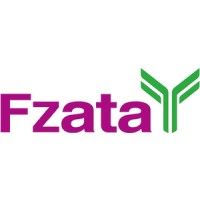预约演示
更新于:2025-05-07
toxB x toxA
更新于:2025-05-07
关联
7
项与 toxB x toxA 相关的药物作用机制 toxA抑制剂 [+1] |
在研适应症- |
非在研适应症- |
最高研发阶段临床2期 |
首次获批国家/地区- |
首次获批日期1800-01-20 |
作用机制 toxA抑制剂 [+1] |
在研适应症 |
非在研适应症- |
最高研发阶段临床申请 |
首次获批国家/地区- |
首次获批日期1800-01-20 |
作用机制 toxA抑制剂 [+1] |
在研机构 |
原研机构 |
在研适应症 |
非在研适应症- |
最高研发阶段临床申请 |
首次获批国家/地区- |
首次获批日期1800-01-20 |
7
项与 toxB x toxA 相关的临床试验NCT05348993
A Phase 2, Randomized, Double-Blind, Placebo-Controlled Study to Evaluate the Safety, Tolerability, Pharmacodynamics, and Immunogenicity of G03-52-01 in Adult Subjects
A Phase 2, randomized, double-blind, placebo-controlled single or repeat dose trial
开始日期2022-06-29 |
申办/合作机构 |
NCT04171115
A Phase 1, Randomized, Double-Blind, Dose Escalation Study to Evaluate the Safety and Pharmacokinetics of a Single IM Dose of G03-52-01 vs Placebo in Adult Subjects
A Phase 1, randomized, double-blind, placebo-controlled dose escalation trial of four dose cohorts of 10 subjects (1: 10mg, 2: 25mg, 3: 50mg, 4: 100mg).
开始日期2020-06-01 |
申办/合作机构 |
EUCTR2011-004994-94-CZ
A Phase III, Randomized, Double-Blind, Placebo-Controlled Study of the Efficacy, Safety and Tolerability of a Single Infusion of MK-6072 (Human Monoclonal Antibody to C. difficile toxin B), and MK-3415A (Human Monoclonal Antibodies to C. difficile toxin A and B) in Patients Receiving Antibiotic Therapy for C. difficile Infection (MODIFY II) - MODIFY II
开始日期2012-03-06 |
申办/合作机构 |
100 项与 toxB x toxA 相关的临床结果
登录后查看更多信息
100 项与 toxB x toxA 相关的转化医学
登录后查看更多信息
0 项与 toxB x toxA 相关的专利(医药)
登录后查看更多信息
356
项与 toxB x toxA 相关的文献(医药)2025-03-01·Carbohydrate Polymers
Characterization of heparin interactions with Clostridioides difficile toxins and its potential as anti-CDI therapeutics
Article
作者: Linhardt, Robert J ; Tomatsidou, Anastasia ; Yang, Jiyuan ; Dordick, Jonathan S ; Fraser, Keith ; Wang, Lianchun ; Wang, Chunyu ; Zhang, Fuming ; Wang, Shaohui ; Gibson, James M ; Sun, Xingmin
2024-12-01·Anaerobe
Fulminant Clostridioides (Costridium) difficile infection caused by a rare strain of PCR-ribotype 153 in Japan: A case report
Article
作者: Senoh, Mitsutoshi ; Horikawa, Shinjiro ; Kaya, Hiroyasu ; Yomogida, Daichi ; Mizuta, Shiori ; Nakamura, Masahiko ; Koshida, Yoshinao ; Uchiyama, Akio ; Hasegawa, Suguru ; Matsuda, Koichiro
2024-11-01·3 Biotech
Comparative genomics of zoonotic pathogen Clostridioides difficile of animal origin to understand its diversity
Article
作者: Sharma, Rajeev Kumar ; Priyadharshini, Murugaiyan Latha Mala ; Manoharan, Seeralan ; Karthik, Kumaragurubaran ; Anbazhagan, Subbaiyan
分析
对领域进行一次全面的分析。
登录
或

生物医药百科问答
全新生物医药AI Agent 覆盖科研全链路,让突破性发现快人一步
立即开始免费试用!
智慧芽新药情报库是智慧芽专为生命科学人士构建的基于AI的创新药情报平台,助您全方位提升您的研发与决策效率。
立即开始数据试用!
智慧芽新药库数据也通过智慧芽数据服务平台,以API或者数据包形式对外开放,助您更加充分利用智慧芽新药情报信息。
生物序列数据库
生物药研发创新
免费使用
化学结构数据库
小分子化药研发创新
免费使用



